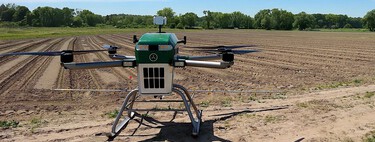The rains these days are the most expected in many years. But they may have come late for many farmers. With about 80% of the land affected according to the data offered by the sector, the loss of entire crops is expected.
concern in the sector. One of the most worrying facts about the latest report of the Coordinadora de Organizaciones de Agricultores y Rancheros (COAG) is the expected loss of practically all the wheat and barley crops in eight autonomous communities, including Castill y León, Castilla-La Mancha and Aragón, the three communities with higher production of these cereals.
Rainfed cereal crops are being the worst off, but they are not the only ones according to the report. It is possible that the rains could save the rice harvest in the Ebro delta, a crop on which some uncertainty already fell, but they have made its cultivation impossible in other places such as Andalusia.
Save the plants, lose the fruit. Although rainfed cereals bear the brunt, COAG explains in its report that the lost harvests will affect various crops. To the point that farmers have already given up entire fruit crops for focus on ya save the trees.
Not even honey is saved. Honey is another of the goods that could end up affected by the drought this year. The problem in this case, the farmers explain, is that the plants that must provide the bees with the nectar necessary for the production of this valuable sweetener. This means adding fuel to the fire of a sector also punished by unfair competition and pests.
The hydrological situation. One of the great concerns in recent weeks has revolved around the state of the water reserves. He latest newsletter hydrological data still showed the downward trend of the last few weeks. We will have to wait for the next weekly bulletins to see how the rains can affect the reserves. It will have to rain a lot for the situation to improve.
The state of the soil has a lot to do with this. During the last few months, the drought has affected the soil so much that its moisture levels had reached such low levels that they were comparable to those of deserts such as the Sahara. This implies more runoff and more water that will end up wasted. Still, it’s better than nothing.
For now, the State Meteorological Agency (AEMET) has activated yellow warnings due to rainfall and storms in a good part of the eastern peninsula and the Balearic Islands, expanding tomorrow to the west of Guipúzcoa and north of Navarra.
A lousy hydrological year. This week’s rainfall will hardly save the hydrological situation. The COAG report explains that the rainfall for this hydrological year has been 18.8% below the average for the reference period (1991-2020). According to latest AEMET data, the situation is even worse, with a fall of 28%. They also warn that the situation could continue to worsen between now and the end of the hydrological year in September.
Without going any further, April this year has been the driest and warmest so far this century, with a temperature three degrees above usual and average rainfall 78% below the average for the peninsula.
A long term problem. It seems that the worst omens in the sector have been fulfilled until we are in a situation that borders on critical. It is not the annual drought that should worry us but the unstoppable trend we are facing: Year after year the hydrological reserves are dwindling due to the cumulative effect of the lack of rain.
In Xataka | The most depressing image that best explains the drought in Spain has been taken from space
Image | hurk


![[Img #74664]](https://thelatestnews.world/wp-content/uploads/2024/12/James-Watson-The-controversial-genius-behind-the-double-helix-150x150.jpg)









![[Img #74664]](https://thelatestnews.world/wp-content/uploads/2024/12/James-Watson-The-controversial-genius-behind-the-double-helix-300x200.jpg)

